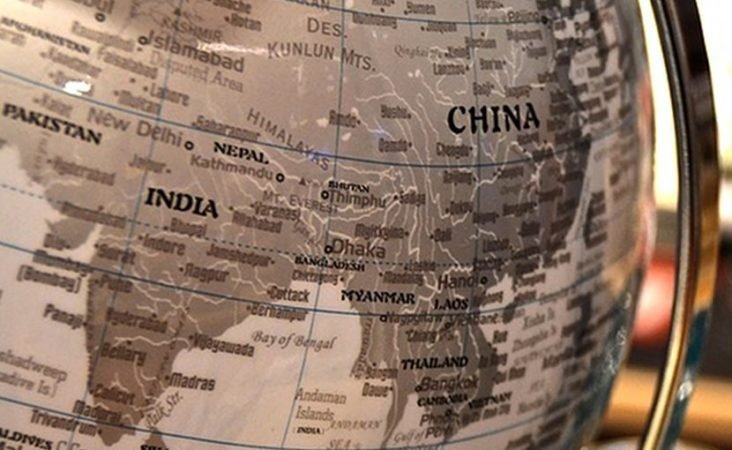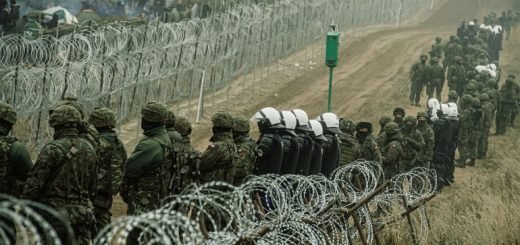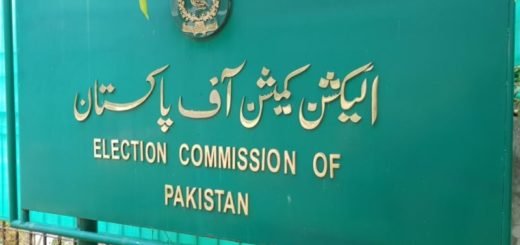Has it Gotten Harder to Start a War in South Asia?

India and Pakistan are back at it again. On 14 February, 44 soldiers from Indian paramilitary forces were killed in Indian Kashmir. The attack was perpetrated by Jaish-e-Muhammed (JeM), a Pakistani jihadist group that India claims is supported by the Government of Pakistan. India responded with bombing runs against JeM targets on the Pakistani side of the Line of Control. The international community is predictably concerned about the possibility of these nuclear-armed neighbours initiating a large-conflict, as there is a history of bellicose behaviour between them.
India and Pakistan have fought in three full-scale wars—the First and Second Kashmir Wars in 1948 and 1965 respectively, and the War for Bangladeshi Independence in 1971—and narrowly averted escalating into a fourth as a result of the 1999 Kargil Conflict. The current flash-point could spark another large conflict, but may not as Pakistani PM Imran Khan has taken steps to walk back the tensions by releasing a captured Indian Air Force pilot as a “peace gesture.’ As of now, there is no certainty that this will prevail on Indian PM Narendra Modi to draw back, but it does seem that it has become more difficult to start a war in South Asia these days.
The Issue of Nuclear Deterrence

Nuclear deterrence clearly plays a role in constraining conflict between India and Pakistan, but not a definitive one. The twin nuclear tests in May of 1998 have altered the calculus of engagement in the region, reducing the likelihood of large-scale hostilities. The Kargil Conflict is one illustration. Covert Pakistani penetration into Indian Kashmir could have resulted in a much broader conflict than the roughly four-month, 4000-casualty affair. However, domestic fears of escalation on both sides of the border, and the attention of the international community concerning nuclear-capable rivals fighting a border
Nevertheless, the logic behind the notion that nuclear deterrence prevents conflict is fickle. First, the Kargil Conflict was not averted, merely constrained. Deterrence did not prevent it altogether. Also, the fear of escalation may have inhibited either side from preventing or terminating the war more quickly. This supports a claim that nuclear deterrence can actually open up space for recurring small-scale conflicts because neither side will risk taking stronger measures to end the conflict, so they continue to glow like hot embers never bursting into flame. While deterrence may help clarify why the Kargil Conflict did not develop into large-scale hostilities like the First and Second Kashmir Wars and the War of Bangladeshi Independence, it only presents a partial explanation for why wars are more difficult to start in South Asia today.
China’s Changing Influence over South Asian Affairs

Even though the current tensions are due to an internal South Asian issue, one should never underestimate the role of the People’s Republic of China in the affairs of the Subcontinent. Of interest here is how China’s role has changed over time. Despite early cordial relations with India, through the 1950s, the PRC’s interests came to align more with Pakistan, particularly after China claimed the Aksai Chin, a contested region of Kashmir on the Indian side of the Line of Control. Sino-Indian relations ruptured with the 1962 Sino-Indian border war and China’s subsequent support for Pakistan in the 1965 Second Kashmir War. China’s “the-enemy-of-my-enemy-is-my-friend” approach resulted in consistent military and economic assistance to Pakistan that marked the India-China-Pakistan triangle relationship for over thirty years.
However, China’s connections to South Asia have transformed. American arrogation of Pakistani foreign policy before and after the Cold War placed pressure on Sino-Pak partnership, while the expansion of the Indian economy since the collapse of the Soviet Union has resulted in trade relations with China that reached nearly US$85 billion last year. China has also intensified efforts to woo smaller South Asian states like Bangladesh, Sri Lanka and the Maldives as PRC strategy has moved away from mere military concerns to regional economic development and securing resources. China has been able to use its observer status within the South Asian Agreement on Regional Cooperation since 2007 as a platform to forge agreements with the peripheral states that realize their own goals and frustrate India’s. The “String of Pearls” deep sea port strategy and Belt Road Initiative are cases in point.
China’s role in the Subcontinent has clearly modified, but how does this make it harder to start a war now in South Asia? Whereas the PRC’s earlier goals were served by encouraging Pakistan to open additional fronts against Indian, China’s has more to gain from its India trade and sustained access to the Pakistani deep-sea port of Gwadar near the Persian Gulf. And as China’s interests have diversified throughout the Subcontinent, it benefits more from regional stability. A large shooting war between India and Pakistan would negatively affect the smaller states in the region that China has been courting.
The truth of the matter is that China now gains more from peace in South Asia than it does by sowing discord between India and Pakistan. The PRC has made this clear since Kargil in its public statements and its tactical silence. This is not to say that China holds a veto over Indo-Pakistani conflict, but the truth is really not too far off.
Does Populist Nationalism fit into the Equation?
There is another important to be addressed, and that is the bearing of populist nationalism on the likelihood of conflict between India and Pakistan. There is a general concern among analysts and commentator that the nationalist saber-rattling of both Modi and Khan will make escalation toward large-scale hostilities more likely. Modi is seen as propelled toward conflict because of the rhetoric he employs with an eye to the upcoming Indian elections, as Khan is motivated to consolidate his recent outsider victory in Pakistan. Both leaders rely on energizing their base through nationalist propaganda and stoking anger towards their adversaries. One would assume that this could erupt into a call for war on either side of the border.
This viewpoint is instinctive, but may be biased. Commentators must move past the perceived orthodoxy that populist nationalism will always engender total war. This has been the dominant narrative since the rise of fascism and the Second World War. But must this narrative hold for all cases? I don’t believe that inflammatory speeches must directly result in popular support for an actual war versus a symbolic public venting of grievances. The rhetoric on both sides is deployed for political, and particularly electoral, impacts; and while populist nationalism may be politically expedient, asking you citizens to send their family and friends into harm’s way is not. When all is said and done, the voting public does not like facing the death and atrocities of war on a personal level, resulting in a backlash. Moreover, it is more likely that two nationalist leaders would be more likely to sense the hyperbole in each other’s words and ignore the bait than it would have been for the more sober and staid Indian leaders who lead their country into their first three wars. I am not saying that nationalist saber-rattling is desirable, but that it does not necessarily determine for conflict escalation
Perhaps War has gotten Harder to Start in South Asia
India and Pakistan have been strategic rivals even since before becoming independent states. They claim highly contested borders and share too few trusted third-party intermediaries. Some degree of conflict between the two seems inevitable the foreseeable future. While India and Pakistan must certainly continue to strive towards confidence building and trust, with the help of an active and attentive international community, we ought to also recognize that checks on large-scale conflict have been developing over time. Starting a full-scale war in South Asia does see more difficult than it has been for decades



















